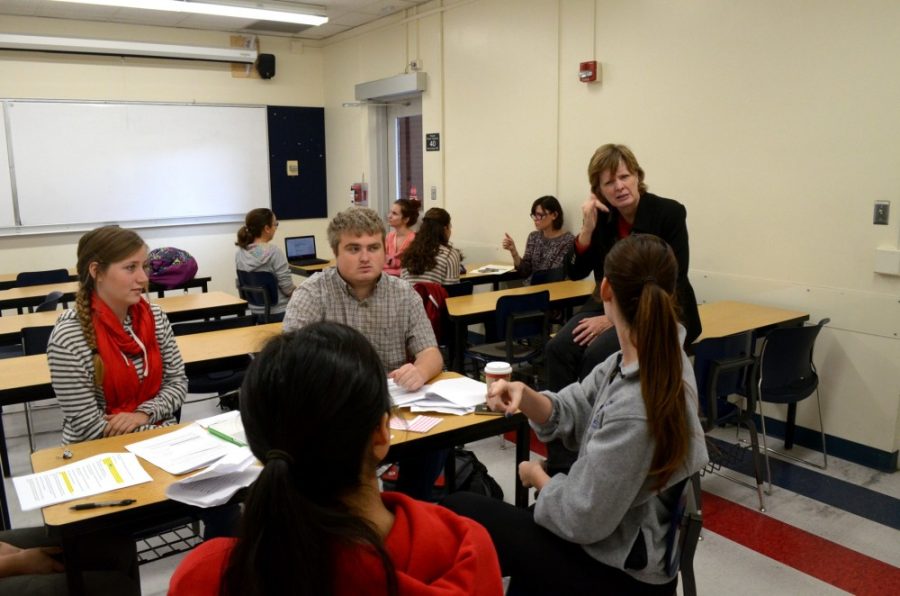As the UA’s sign language interpreting program becomes more popular, lack of funding and faculty has led to a more rigorous admissions process.
While more students have shown interest in the UA’s Educational Interpreting Program there have been a steady 20 to 25 students enrolled each year because of limited faculty and funding for more classes, according to Cindy Volk, director of the educational interpreting program. To maintain the amount of students admitted, the program has become more competitive.
Students who wish to take part in the program must complete an application process that requires academic records, essays and an interview by a panel from the program to determine the student’s fluency in American Sign Language.
After the student is admitted to the program, they must fulfill a series of three required practicums in order to graduate from the program, Volk said.
“We have had to get much stricter with our admissions process,” Volk said. “For example, we have implemented a live interview panel to determine the ASL skills of the applicants.”
The interpreting program at the UA is designed to prepare students to work in the interpreting field and to be fluent in ASL in order to work with children in grades K-12 around the U.S. The program was introduced in the 1970s but became officially funded by the U.S. Department of Education in 2000 after Volk wrote a grant to the department.
Volk said the grant process is “highly competitive and hard to come by,” but she has successfully held the grant for 13 years, having to reintroduce it and rewrite it every four to five years. Her next request is due in 2014.
The program’s funding relies solely on the grant money it receives from the Department of Education, Volk said, adding that the funding from the department is limited.
“The program only has enough funding to hire a couple of faculty members,” Volk said. “I think we could grow it but we don’t have enough money for that.”
Due to the regulations of the grant, 65 percent of the money has to go to students in the program in the form of financial aid, 10 percent goes to the UA for “indirect costs,” leaving about 25 percent for faculty, which is a very small amount, Volk added.
“There are very strict guidelines about that,” Volk said. “I cannot control how much goes to what.”
Students in the program have the option to apply for financial aid, which includes tuition money and a stipend for books and supplies. However, for every semester a student accepts the financial aid, they are obligated to work one year at a K-12 educational institution in the U.S. interpreting or translating, Volk said.
The program trains students through a series of practicums and requirements set by the program. Students get the chance to observe and shadow interpreters. The second practicum is “very intense” because it is used to determine whether the student can move on to the third practicum, which involves working with a child who is hearing impaired, Volk said.
Kylie Mosell, a junior studying special education and rehabilitation, was admitted to the program this semester.
“The program is demanding and does require a decent amount of my time,” Mosell said. “It can get tough, but it is all so worth it and extremely rewarding.”
Erin Millis, a senior studying special education and rehabilitation who is graduating from the program this year, accepted the financial aid money for four semesters and said she is “perfectly fine” with exchanging the financial aid for four years of work. Millis said she became interested in interpretation while working at a Tucson doctor’s office in which she observed many hearing impaired patients.
“Seeing the translators communicate with the deaf patients was so cool,” Millis said, “and I wanted to be able to communicate with them.”
Volk said she has never gone to the UA for more funding but feels that if she didn’t have the grant to fund the program then she would turn to the university.
“It’s a small program and it’s probably never going to be a huge program,” Volk said. “So in that respect, for the UA to totally fund a program that is relatively small is difficult.”
– Follow Adriana Espinosa @adri_eee









